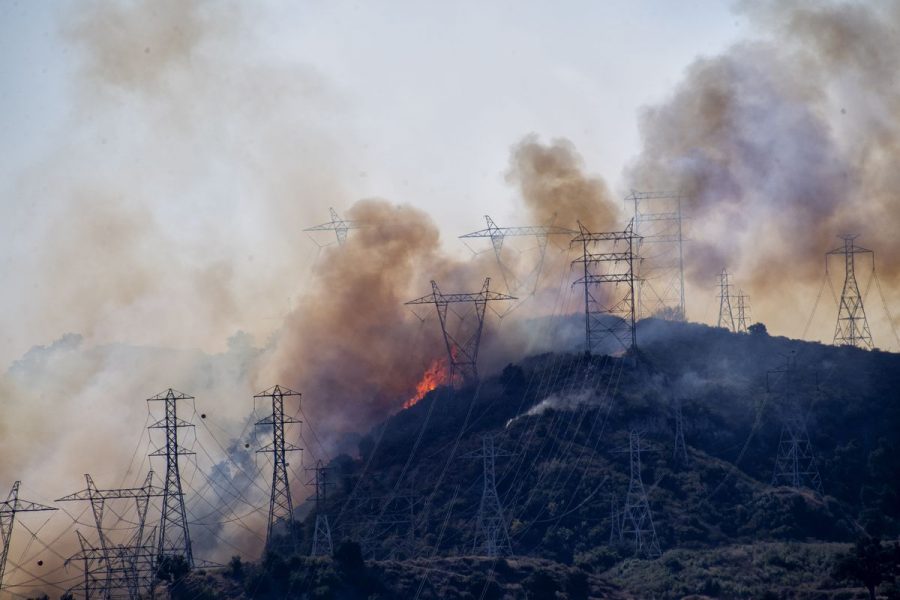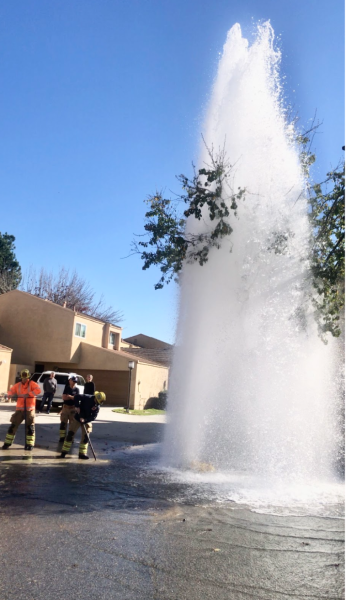Overhead or Underground?
Overhead electric transmission systems have caused various wildfires in regions such as Southern California, and is reportedly becoming more frequent with climate change.
January 7, 2020
According to Scientific American, “the largest interconnected machine on Earth” is “the US electrical grid.” This is not hard to believe, as overhead power lines can be seen in all parts of the country. In total, Scientific American records over “200,000 miles of high-voltage transmission lines” and “5.5 million miles of local distribution lines.” With the construction of the electric grid, reliable electricity became a standard for modern society.
Although they are a common sight, power lines often go unnoticed. Still the lines are important, as they are the means of distributing electricity over long distances. They connect homes, buildings, and facilities to the three thousand power plants in the United States. The lines are held up by utility poles, also called pylons; the term “pylon” is unknown to most, but Merriam Webster defines it as “a tower for supporting… a number of wires over a long span.”
The electric system was once hailed as the greatest engineering achievement of the 20th century, but as time passes, so does the efficiency of equipment. National Academies notes that most US transmission lines “were constructed more than 40 years ago… based on 1950’s technology.” While the grid deteriorates, the demand for energy will only increase with wholesale electric competition.
There are also some inherent problems with electrical transmission. Overhead power lines can be extremely dangerous with the risk of electrical shock or death. Since high voltage power lines are not insulated, electricity could reach the ground through direct contact or through the air. Occupational Health and Safety warns that “an electric current… [can] part through a gas such as air to a person who is grounded.”
These risks increase with extreme weather and natural disasters. Damage to overhead power lines can cause blackouts for days. Sometimes downed or damaged power lines are even the cause of various disasters, such as wildfires.
Southern California has experienced a considerable amount of fires in the past few years, many of which were sparked by electrical utilities. President of the California Public Utilities Commission, Marybel Batjer, admitted that “the state has learned too well… the level of destruction climate change-induced weather events can have on our communities, when combined with negligent maintenance of electrical infrastructure.” Indeed, climate change threatens to heighten the likelihood of wildfires in regions such as Southern California.
To some, the obvious solution is to transition from overhead power lines to underground power lines. Underground power lines are considered more aesthetically pleasing, and buried lines would not be susceptible to disrupture from trees or wind. Bella Smith (9) says that “underground power lines make more sense… especially because power lines are ugly it would make the cities look ‘cleaner.’” However, underground power lines present its own problems. The most significant issue is the cost: Star Energy Partners estimates that the cost of burying the lines is “$750 per foot,” compared to “$70 per foot.” In addition, underground lines would still be vulnerable to flooding and earthquakes. With current electric conditions, Star Energy considers the alternative “an impractical concept on a large scale.”





















